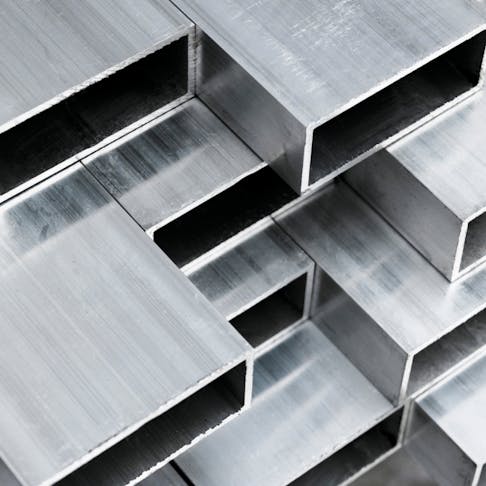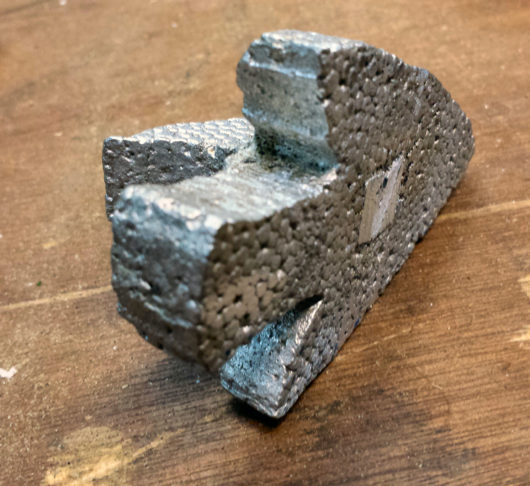Best practices for reliability in aluminum casting production
Wiki Article
A Comprehensive Guide to Aluminum Casting: Techniques, Makes Use Of, and Industry Insights
Aluminum casting is a critical procedure with varied applications across numerous industries. This overview checks out different casting techniques, including sand, pass away, and financial investment casting. Each method has distinct benefits, adding to aluminum's track record for light-weight and corrosion-resistant elements. Recognizing these methods is necessary for suppliers wanting to take advantage of aluminum's homes. Nonetheless, the landscape is swiftly progressing. The influence of present patterns on future techniques warrants additionally exploration.Comprehending Aluminum: Properties and Advantages
Aluminum, a functional steel, is extensively acknowledged for its distinct buildings that make it an excellent option for different applications. It is lightweight yet strong, using an excellent strength-to-weight proportion that is specifically useful in industries such as aerospace and automotive. Furthermore, aluminum shows exceptional deterioration resistance because of the development of a protective oxide layer, which enhances its toughness and longevity.The metal is additionally highly malleable, permitting for very easy shaping and construction, which adds to its extensive use in manufacturing. Moreover, aluminum is an excellent conductor of power and warm, making it valuable in electrical and thermal applications. Its recyclability contributes to its allure, promoting sustainability in producing processes. The mix of these buildings not just boosts efficiency but likewise decreases power consumption throughout its lifecycle, positioning aluminum as an essential material in modern design and style.
Review of Aluminum Casting Techniques

Sand Casting Methods
Amongst various aluminum casting strategies, sand casting stands apart as one of one of the most commonly utilized approaches because of its convenience and cost-effectiveness. This method entails producing a mold from sand, which can be conveniently shaped to form complex geometries. The process starts with packaging sand around a pattern, commonly made of metal or plastic, to produce a dental caries that specifies the last form. Once the mold is ready, liquified aluminum is poured into the dental caries, permitting it to solidify and cool down. Later, the sand is eliminated, revealing the cast part. Sand casting is especially favored for creating large components and small production runs, making it an essential method in various markets, including automotive and aerospace. Its adaptability to different layouts enhances its allure.Die Casting Processes
Die casting processes represent an extremely effective method for creating complex aluminum parts with superb dimensional accuracy and surface coating. This technique includes requiring molten aluminum into a mold and mildew under high pressure, ensuring that also the most intricate geometries can be accomplished. There are 2 main sorts of die casting: hot chamber and cold chamber. Hot chamber die casting appropriates for metals with reduced melting points, while chilly chamber pass away casting is liked for aluminum as a result of its higher melting point. Both methods promote fast manufacturing and can suit high quantities, making them excellent for markets such as vehicle and electronic devices. Effective die casting calls for accurate temperature control and mindful mold style to assure and avoid defects high quality.Sand Casting: A Typical Approach
Modern casting methods have emerged, sand casting remains a fundamental approach in the aluminum industry due to its versatility and cost-effectiveness. This typical technique entails developing a mold and mildew from a mix of sand and a binding agent, enabling for the manufacturing of complicated forms and dimensions. Sand casting is especially helpful for reduced to medium manufacturing quantities, as it lessens configuration expenses and time.The procedure starts with the development of a pattern, which is after that positioned in the sand to develop a cavity. When the mold is ready, molten aluminum is gathered, filling the tooth cavity and taking the form of the pattern. After cooling, the sand is gotten rid of, disclosing the completed cast part.
Sand casting is commonly used for generating automobile elements, equipment components, and creative sculptures, highlighting its long-lasting significance in numerous sectors of the aluminum market. (Precision aluminum casting)
Die Casting: Accuracy and Performance
Die casting is a procedure that offers amazing precision and performance in aluminum production. This approach is commonly made use of throughout numerous industries due to its capability to generate complex forms with limited tolerances. It additionally provides special difficulties that require ingenious options to guarantee perfect outcomes.Process Summary and Perks
When thinking about aluminum casting methods, die casting stands out for its precision and effectiveness. This process involves requiring liquified aluminum into a mold and mildew under high stress, which enables tight resistances and detailed styles. The quick cooling of the steel warranties fast solidification, leading to high-quality get rid of very little surface area flaws. Additionally, die casting offers outstanding repeatability, making it appropriate for big manufacturing runs. Making use of recyclable molds substantially reduces product waste and production time, adding to cost-effectiveness. The toughness and longevity of die-cast aluminum elements make them favorable for requiring applications. Generally, pass away casting combines advanced innovation with sensible advantages, positioning it as a leading choice in aluminum casting methods.Applications in Different Industries
The flexibility of die casting enables its application across a vast array of sectors, showcasing its accuracy and performance. In the automobile sector, pass away casting generates detailed components such as engine blocks and transmission real estates, adding to weight reduction and enhanced performance. The electronics industry take advantage of die casting by producing light-weight and sturdy housings for various tools, improving both capability and looks. In the aerospace field, this technique supplies high-strength parts that endure extreme conditions while maintaining low weight. Furthermore, customer items producers use pass away casting for generating elements that call for complex geometries and limited tolerances. In general, pass away casting plays look at this web-site an essential function in progressing technology and product design throughout numerous fields, highlighting its importance in modern production.Obstacles and Solutions
Various challenges develop in the die casting procedure that can impact both accuracy and performance. One substantial issue is the event of flaws such as porosity, which can compromise the stability of the end product. In addition, preserving specific temperature level control is essential, as variations can lead to inconsistent material residential or commercial properties. Tool deterioration also present difficulties, usually causing increased manufacturing expenses and downtime. To alleviate these problems, manufacturers utilize innovative simulation software application to forecast possible troubles before production begins. Carrying out routine upkeep timetables for machinery and tools additionally aids keep effectiveness. Investing in premium products and using skilled specialists can improve overall procedure dependability, ensuring that high standards of precision are continually met.Financial Investment Casting: Detail and Intricacy
Although financial investment casting is usually linked with high precision and detailed layouts, its true toughness lies in the capacity to create intricate geometries that would be challenging to accomplish with various other making procedures. This technique employs a wax pattern, which is coated with a refractory product to create a mold and mildew. As soon as the mold is created, the blog here wax is dissolved, leaving a dental caries that perfectly reproduces the original pattern.
Applications of Aluminum Castings Throughout Industries
Financial investment casting's capability for producing complex aluminum components has actually made it a valuable method across numerous sectors. In the automotive market, aluminum spreadings are used for engine blocks, transmission housings, and suspension components, contributing to weight reduction and enhanced fuel performance. The aerospace sector gain from aluminum spreadings in airplane frames, generator housings, and touchdown equipment, where strength-to-weight proportion is important. Precision aluminum casting. Additionally, the electronics industry utilizes aluminum castings for heat enclosures and sinks, guaranteeing reliable thermal monitoring and durability. In the building market, aluminum castings are made use of for architectural aspects, home window structures, and structural elements, using deterioration resistance and aesthetic charm. The aquatic sector incorporates aluminum castings in boat engines and fittings due to their lightweight and resistance to salt water deterioration. In general, aluminum spreadings demonstrate versatility and functionality, making them vital in varied applications throughout numerous fieldsExisting Patterns and Future Directions in Aluminum Casting
Current innovations in aluminum casting technology are forming the future of making throughout different fields. One remarkable pattern is the increasing fostering of additive production methods, which enable for even more complicated geometries and reduced product waste. Additionally, the combination of automation and robotics simplifies production procedures, boosting efficiency and accuracy.
Sustainability is likewise a driving force, with makers concentrating on reusing aluminum and reducing power intake throughout the casting procedure. This change not only minimizes environmental effect but likewise decreases operational prices.
Additionally, innovations in simulation software enable far better design and optimization of casting processes, causing better products with fewer issues. As sectors remain to embrace these technologies, the demand for lightweight and high-performance aluminum elements is expected to rise, even more solidifying aluminum casting's duty in the future of manufacturing. On the whole, these fads highlight a commitment to efficiency, sustainability, and technological advancement in the aluminum casting industry.
Frequently Asked Concerns
What Are the Environmental Influences of Aluminum Casting Processes?

Exactly How Does Aluminum Casting Compare to Other Products?
Aluminum casting offers lightweight, corrosion-resistant buildings, making it advantageous compared to larger metals like steel. Its thermal conductivity and ease of creating additionally boost its charm, while particular plastics supply adaptability doing not have in traditional aluminum applications.What Safety and security Steps Should Be Taken During Aluminum Casting?
Throughout aluminum casting, vital precaution include wearing safety equipment, guaranteeing proper ventilation, making use of fireproof products, keeping tools consistently, and adhering to security methods to avoid crashes and direct exposure to damaging go fumes and liquified steel.Just How Can I Choose the Right Aluminum Alloy for Casting?
Picking the ideal aluminum alloy for casting includes assessing mechanical residential or commercial properties, corrosion resistance, and intended application. Consider aspects like temperature level resistance and weldability to guarantee the selected alloy satisfies certain efficiency and sturdiness demands.What Are the Common Problems in Aluminum Castings and Their Solutions?
Typical defects in aluminum spreadings include surface, shrinking, and porosity flaws. Solutions include boosting mold design, regulating air conditioning rates, and guaranteeing appropriate alloy choice, along with executing comprehensive evaluation strategies to identify and remedy these concerns effectively.Amongst the most typically used techniques are sand casting and die casting, each offering distinct benefits and applications. Among different aluminum casting strategies, sand casting stands out as one of the most commonly used techniques due to its versatility and cost-effectiveness. Hot chamber pass away casting is suitable for steels with reduced melting points, while chilly chamber die casting is preferred for aluminum due to its higher melting point. Modern-day casting techniques have actually emerged, sand casting stays a foundational method in the aluminum sector due to its flexibility and cost-effectiveness. When thinking about aluminum casting techniques, pass away casting stands out for its precision and effectiveness.
Report this wiki page